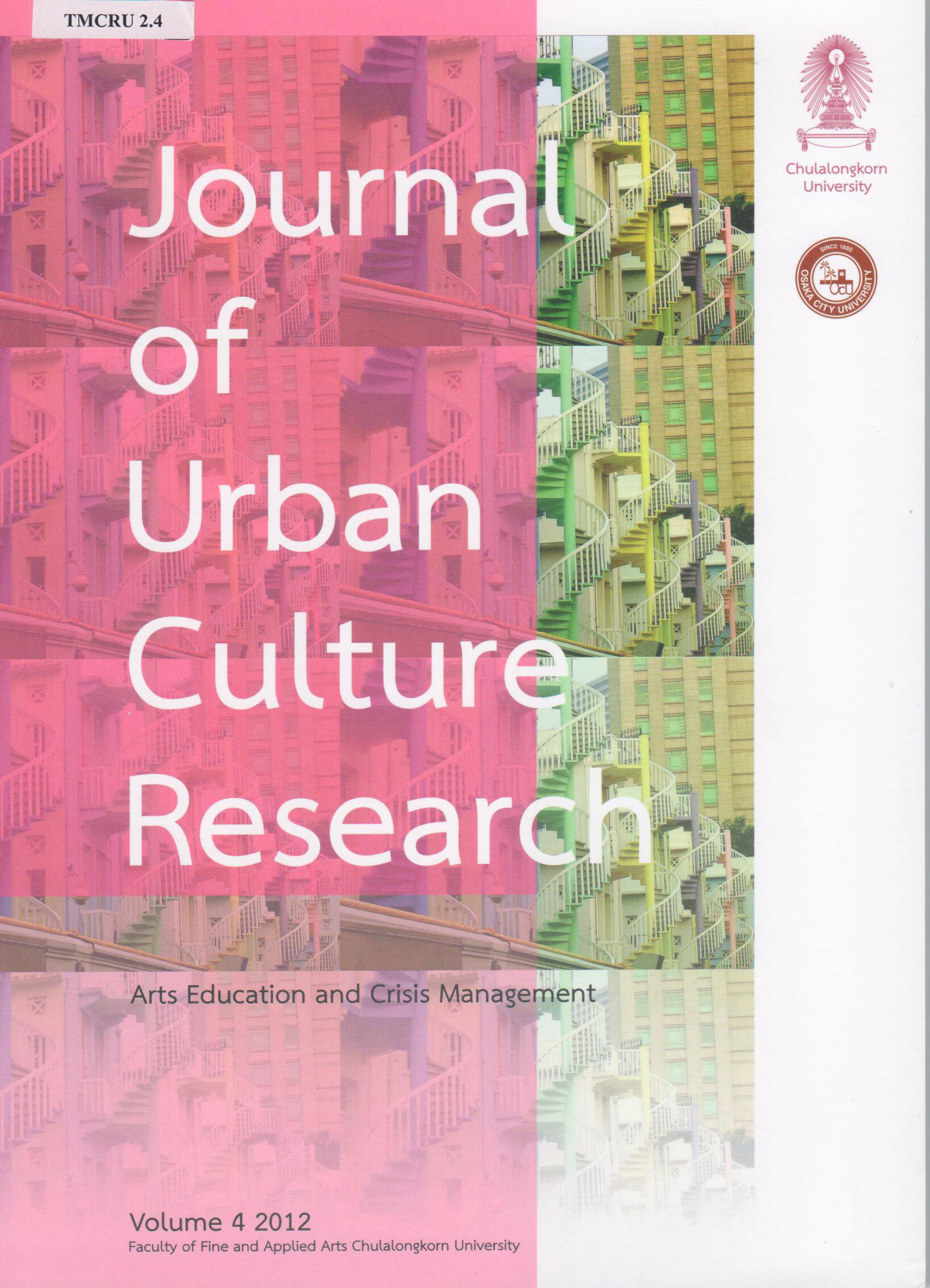Arts Education and Relief Activism After the 2011 Japanese Tsunami
DOI:
https://doi.org/10.14456/jucr.2012.3Keywords:
Japan, Earthquake, Tohoku, Tsunami, Tenrikyo, Hinokishin, ArtsAbstract
Tenrikyo, one of the New Japanese Religions, has a charitable tradition of practical voluntary help called hinokishin. The teaching of this tradition translates as selfless actions performed in gratitude for life’s blessings that are usually taken for granted. Hinokishin has been ingrained in Tenrikyo’s philosophy since its inception, as a natural re"ection of Buddhist and Christian norms circulating in Japan at the beginning of the 19th century. In modern Japanese history, Tenrikyo hinokishin provided relief after the earthquakes of Kobe and Sanriku–Minami, and other natural disasters. When the bewildering news was broadcasted on 22 March 2011 that the powerful Tohoku earthquake was followed by a tsunami hitting the coast of Japan, Tenrikyo established a disaster response centre at its headquarters in Tenri and members from all over Japan instantly joined the Disaster Relief Hinokishin Corps.Downloads
How to Cite
Buijs-Dragusin, Cornelia. 2014. “Arts Education and Relief Activism After the 2011 Japanese Tsunami”. Journal of Urban Culture Research 4 (-):56-63. https://doi.org/10.14456/jucr.2012.3.
Issue
Section
Articles
License
Authors authorize the JUCR to publish their materials both in print and online while retaining their full individual copyright. The copyright of JUCR volumes is retained by Chulalongkorn University.
The views and opinions expressed herein are those of the individual author(s) and do not necessarily reflect the policies or opinions of the Journal (JUCR), it editors and staff, Chulalongkorn University, or Osaka Metropolitan University.








